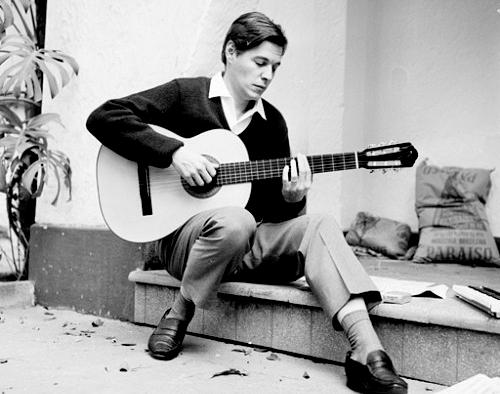Bossa Nova, a musical genre born in the vibrant streets of Brazil, has transcended geographical boundaries to become a symbol of cultural expression and artistic innovation. This essay aims to delve into the rich history of Bossa Nova, tracing its origins, evolution, notable figures, and its complex relationship with the socio-political landscape of Brazil, particularly during the military dictatorship era. Furthermore, it will explore the musical characteristics of Bossa Nova, its influences from Samba, Classical Music, and Jazz, highlighting its unique blend of rhythms and melodies.
Origins and Development of Bossa Nova
Bossa Nova emerged in the late 1950s, primarily in the neighborhoods of Copacabana and Ipanema in Rio de Janeiro, Brazil. It is a fusion of traditional Brazilian music, particularly Samba, with influences from Jazz and Classical Music. The term “Bossa Nova” roughly translates to “new trend” or “new wave,” reflecting its innovative and avant-garde nature at the time of its inception.
One of the pioneering figures in the Bossa Nova movement was João Gilberto, whose distinctive guitar style and soft, intimate vocal delivery epitomized the essence of the genre. Gilberto’s seminal recording of “Chega de Saudade” in 1958, composed by Antonio Carlos Jobim and Vinicius de Moraes, is often regarded as the first official Bossa Nova recording. This marked the beginning of a musical revolution that would captivate audiences worldwide.
Notable Figures of the Bossa Nova Movement
Several influential musicians and composers contributed significantly to the development and popularization of Bossa Nova. Among them, Antonio Carlos Jobim, often referred to as Tom Jobim, stands out as a central figure. Jobim’s compositions, such as “Girl from Ipanema” and “Corcovado,” epitomize the romanticism and elegance synonymous with Bossa Nova.
Another key figure in spreading Bossa Nova internationally was Stan Getz, an American saxophonist who collaborated with Brazilian artists, including João Gilberto and Antonio Carlos Jobim, to produce the groundbreaking album “Getz/Gilberto” in 1964. The album featured the iconic track “The Girl from Ipanema,” which became a global sensation and propelled Bossa Nova to international acclaim.
Sergio Mendes, with his ensemble Brasil ’66, also played a pivotal role in popularizing Bossa Nova outside Brazil. His fusion of Bossa Nova with pop sensibilities introduced the genre to a broader audience, contributing to its lasting legacy in popular music.
Bossa Nova and the Military Dictatorship
The rise of Bossa Nova coincided with a turbulent period in Brazilian history, characterized by political upheaval and social change. In 1964, a military coup led to the establishment of a repressive dictatorship that would govern Brazil for the next two decades.
During the military dictatorship, cultural expression faced strict censorship and surveillance. Bossa Nova, with its melodic sophistication and apolitical themes, initially found favor with the ruling regime as it presented an image of Brazilian culture that was palatable to international audiences. However, this favor came with conditions.
In order to continue being allowed to play on the radio and perform publicly, Bossa Nova artists had to navigate a delicate balance between artistic integrity and compliance with government censorship. Many chose to self-censor their lyrics and avoid overtly political themes, focusing instead on universal topics such as love and romance.
Tropicalia Movement and Censorship
While Bossa Nova managed to navigate the constraints of the military dictatorship, another musical movement, Tropicalia, emerged in the late 1960s as a response to the political repression and cultural homogenization imposed by the regime. Led by artists such as Caetano Veloso and Gilberto Gil, Tropicalia embraced a more confrontational approach to political and social issues, challenging the status quo through their music and lyrics.
However, the conservative dictatorship, closely allied with the Catholic Church, viewed Tropicalia as subversive and a threat to traditional Brazilian values. As a result, the movement faced severe censorship, with many of its songs banned from the airwaves and its artists subjected to persecution and imprisonment.
In contrast to Tropicalia, Bossa Nova’s relatively apolitical stance allowed it to coexist with the military dictatorship, albeit under certain restrictions. Its subdued lyrical themes and sophisticated musical arrangements provided a safe haven for artists seeking to avoid direct confrontation with the authorities.
Musical Similarities with Samba, Classical Music, and Jazz
Bossa Nova is characterized by its distinctive rhythmic patterns, melodic phrasing, and harmonic sophistication, drawing influences from various musical traditions, including Samba, Classical Music, and Jazz.
Samba, a foundational genre in Brazilian music, provides the rhythmic backbone of Bossa Nova. The syncopated rhythms and polyrhythmic patterns of Samba are reinterpreted in Bossa Nova, albeit with a more subdued and laid-back feel.
Classical Music has also played a significant role in shaping the harmonic language of Bossa Nova. Composers like Antonio Carlos Jobim drew inspiration from Classical composers such as Claude Debussy and Maurice Ravel, incorporating lush harmonies and intricate melodic lines into their compositions.
Furthermore, Bossa Nova’s affinity with Jazz is evident in its harmonic vocabulary and improvisational ethos. Musicians like Stan Getz, with his bebop-influenced saxophone lines, seamlessly integrated Jazz elements into the Bossa Nova repertoire, contributing to its global appeal.
Bossa Nova stands as a testament to the resilience of artistic expression in the face of political adversity. Despite the challenges posed by the military dictatorship, Bossa Nova continued to flourish, captivating audiences worldwide with its enchanting melodies and poetic lyricism. Through its fusion of diverse musical influences and its ability to transcend cultural boundaries, Bossa Nova remains a timeless and iconic genre, embodying the spirit of Brazilian music and culture.


